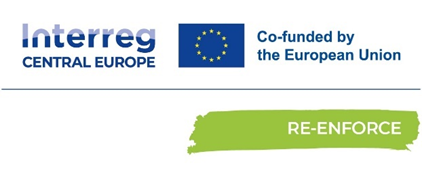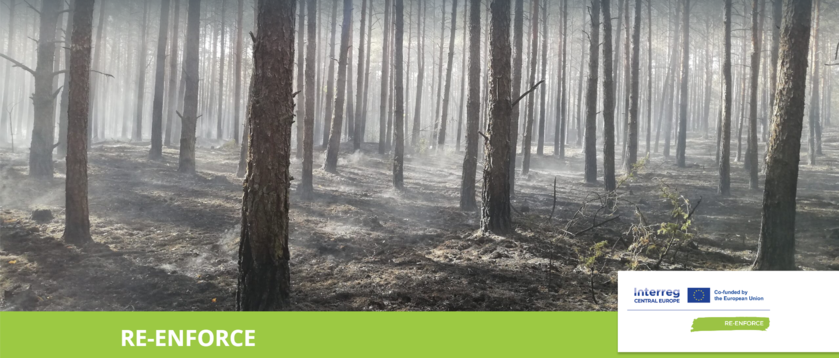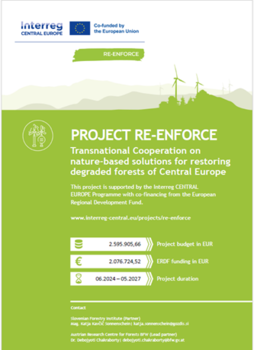
Akronym: RE-ENFORCE
Project number: CE0200902
Project duration: 1.6.2024 - 31.5.2027
Budget: overall 2,60 million €, for the Slovenian Forestry Institute 294.225 €
Cofinancing: 80 % European Commission: European Regional Development Fund, Interreg Central Europe Programme
Partnership: 9 partners from 8 states
Lead partner: Austrian Research Centre for Forests BFW
Project overall objective
The main objective is to facilitate the restoration of degraded forest ecosystems through naturebased solutions (NBS). The project aims to strengthen transnational cooperation to develop nature based forest restoration strategy, test NBS in Pilot Actions and integrate NBS into a web-based Decision Support System. The project outputs will help forest conservation managers, policymakers, and resource planners to allocate resources better and implement NBS for restoring degraded forest habitats.
Project work plan
WP1 Identifying challenges, learning from past and harmonizing data and knowledge
WP2 Understanding forest degradation and testing transnational restoration strategy in Pilot actions
WP3 Transnational nature based solutions for restoring degraded forests of Central Europe
Project results
R1: At least 18 organizations (9 Associated partners from 8 CE countries including Austria, Germany, Croatia, Hungary, Slovenia, Czechia, Poland, and Italy, and 9 PPs) will cooperate to scale up the project results from Output (1.0) beyond the lifetime of the project.
These organizations including research institutes, NGOs, Forest enterprises, and SMEs will ensure that the long-term management plans and Nature-based solutions emerging from the project are executed. The cooperation will be formalized through a Memorandum of Understanding (MAO) between the PPs and the APs of the project.
In addition to the 18 organizations formally cooperating, the cooperation will be open to any additional organization that wishes to benefit from the project outputs and results. This may include universities, research institutes, forest enterprises, conservation authorities, NGOs, national parks, and any concerned public.
R2: One transnational strategy from Output 1.2 will be developed included 6 six thematic parts each focusing on a specific type of forest degradation. This strategy will be adopted by at least 18 organizations and will be scaled up beyond the lifetime of the project to tackle the common problem of forest degradation through nature-based solutions. In addition to 18 formally cooperating organizations, this result can be utilized by forest managers, forest enterprises, conservation authorities, and scientists across CE facing similar kinds of forest degradation. The uptake of output (1.2) will be formalized through letters of commitment between PPs and ASPs. and any party who intends to utilize the transnational restoration strategy
R3: 6 nature-based solutions which are the "Transnational guidelines for restoring degraded forest through Nature-based solutions”, each focusing on a specific type of forest degradation will emerge from Output 3.1. This solution will be taken up by 18 organizations formally cooperating in the project RE-ENFORCE. In addition to 18 formally cooperating organizations, this result is expected to be utilized by forest managers, forest enterprises, conservation authorities, and scientists across CE facing similar kinds of forest degradation. The uptake of output (3.1) will be formalized through the transnational restoration guidelines.

Photo by Ewa Zin
Project poster (click on the image)


